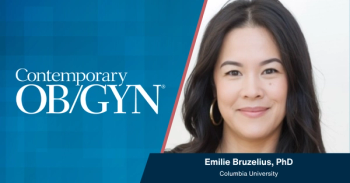
"Isn't it time to separate the O from the G?"
This was the question posed by Javier F. Magrina, MD, in his presidential address at the opening ceremony of the 42nd AAGL global congress on minimally invasive gynecology on November 11. His answer to this question (which of course referred to obstetrics and gynecology) was a resounding "yes," and he backed up this conviction with statistics and anecdotes that illustrated the need for specialized training in minimally invasive gynecologic procedures.
This was the question posed by Javier F. Magrina, MD, in his presidential address at the opening ceremony of the 42nd AAGL global congress on minimally invasive gynecology on November 11. His answer to this question (which of course referred to obstetrics and gynecology) was a resounding "yes," and he backed up this conviction with statistics and anecdotes that illustrated the need for specialized training in minimally invasive gynecologic procedures.
Dr. Magrina noted that one effect of the 80-hour-a-week rule is that gynecology residents have 6 fewer months of training than before and that the minimum requirements for gynecologic surgery residents are much lower than for residents in general surgery. "Minimally invasive surgery is the future," he asserted, and "from 'hands-in' to 'instruments-in' takes a longer learning curve."
To drive home his point that specialized training builds skills, Dr. Magrina showed videos of stunt drivers maneuvering cars into impossibly small spaces at high speeds and one of a pilot managing to land a plane that had lost a wing. The point was not lost on the audience-specialized skills require specialized training. Those stunt drivers are probably not also mechanics.
Another issue adding to the need is the change in procedure frequency. "Are there enough patients to sustain/improve/incorporate new MIGS [minimally invasive gynecologic surgery] skills?" Dr. Magrina asked. In 1980 the average ob/gyn performed 28 hysterectomies in a year, he noted; in 2010 this had fallen to 8.5. It is time, he said, to create a MIGS subspecialty.
Dr. Magrina is a professor of obstetrics and gynecology at Mayo Graduate School of Medicine at Mayo Clinic Arizona.
Newsletter
Get the latest clinical updates, case studies, and expert commentary in obstetric and gynecologic care. Sign up now to stay informed.
















